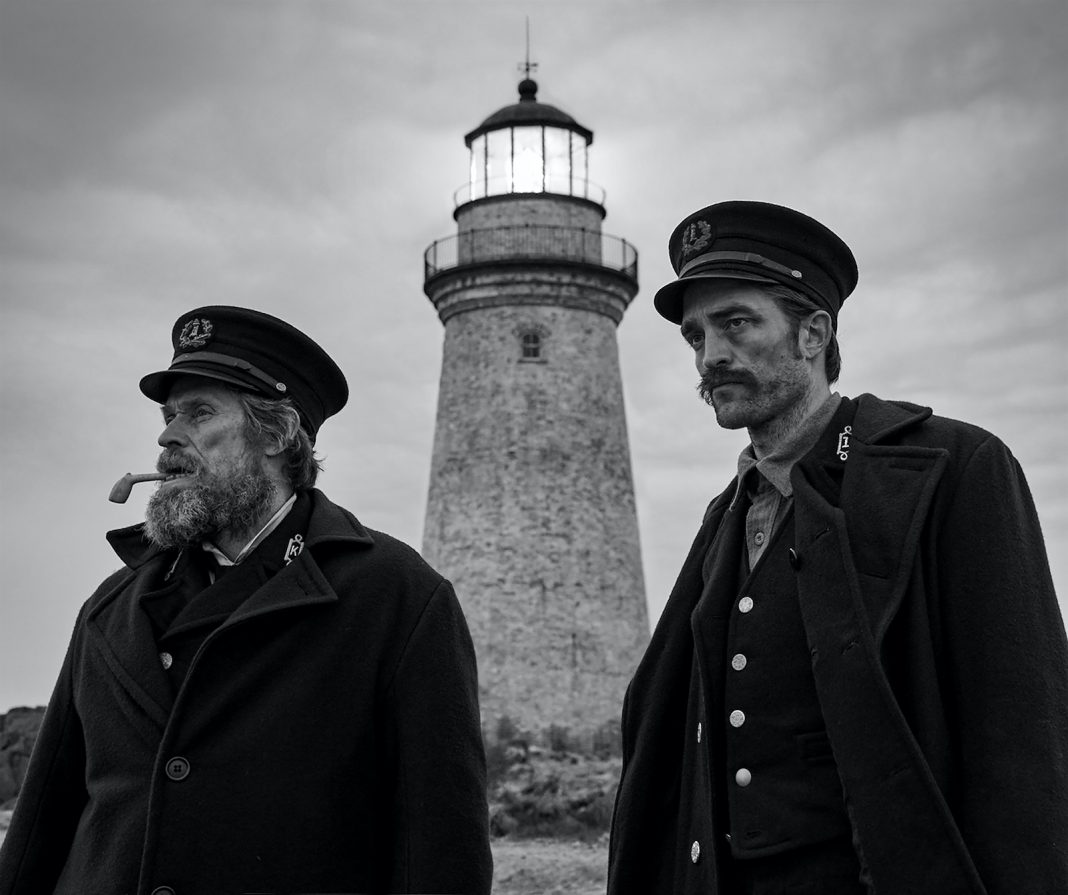Strand two men with doubtful pasts on a storm-tossed island out to sea, throw in a crate of booze, and you know from the get-go things aren’t going to turn out well. They don’t.
It’s 1890 and the two men, Thomas Wake (Willem Dafoe) and Ephraim Winslow (Robert Pattinson), are set down on a rocky outcrop somewhere off the coast of Maine in New England. Their duty for the next four week is to tend the island’s oil-fired lighthouse and keep its foghorn booming.
Wake is the old hand, a former merchant-mariner turned “wickie” (trimmer of the kerosene-fed lighthouse wick). Winslow, his subordinate and new to the job, is a one-time lumberjack.
With echoes of Pinter, the senior man burdens the younger with the station’s menial tasks – emptying the men’s overflowing chamber pots, whitewashing the lighthouse’s exterior, lugging heavy cans of fuel up the light’s cramped spiral stairs – while he, Wake, reserves the serious work, trimming the light’s precious wick, to himself. Which he does with religious, even, as the film graphically details, sexual fervour.
That’s the set-up. If you caught the last movie of The Lighthouse’s writer-director Robert Eggers (The Witch), you know someone is going to get hurt and get hurt they do.
Eggers and his co-writer, brother Max, both from New Hampshire, have taken pains to give their story an authentic look. (One of the script’s inspirations, according to press handouts, was a true-life 1801 tragic event at a lighthouse off the coast of Wales.
Pushing those boundaries, the Egger brothers also tap into the literary works of Herman Melville, Edgar Allan Poe, and Robert Louis Stevenson. There’s more than a hint of Robert Newton’s Long John Silver in Dafoe’s delivery.)
Production notes for the movie make much of old-fashioned aspect ratios, natural light, and vintage lenses. Extra care, we’re told, was taken in getting the actors’ on-screen accents spot-on. The filmmaker’s intent? To make The Lighthouse feel like a documentary. The Witch’s cinematographer (Jarin Blaschke) and composer (Mark Korven) reprise their roles here to great effect.
Once he has established the who, where, and what, Egger spins us a mariner’s yarn that encompasses male masturbation, a stranded mermaid, a vengeful one-eyed seagull, and – spoiler-alert – a bloody murder. (We knew that was coming, didn’t we?)
The Witch was a horror flick. Take Stephen King’s word for it: “The Witch scared the hell out of me.” The Lighthouse, at heart, is a horror flick too; even if it is shot in black-and-white. The British Board of Film Classification warns audiences as the lights go down that the movie they are about to see contains “gore”. In horror classics (The Exorcist, Dracula), the gore is always blood red. In Eggers’ The Lighthouse, the gore is pitch black.
One detail that may (or may not) please Rye residents is mentioned in another production note: “No seagulls were harmed in the making of this movie. The film’s one-eyed seagull was played by three trained rescue seagulls from the UK named Lady, Tramp, and Johnny.”
Robert Egger’s The Lighthouse is screening at Kino Rye.



